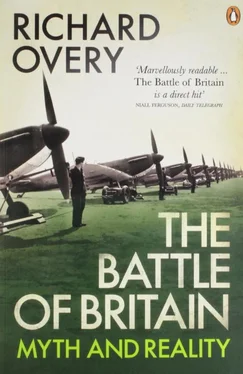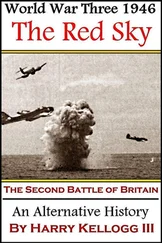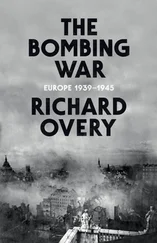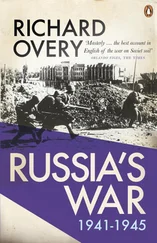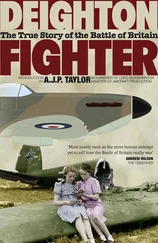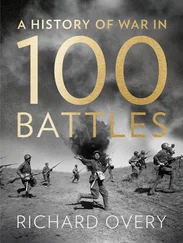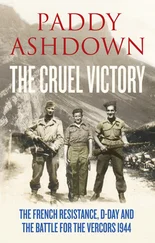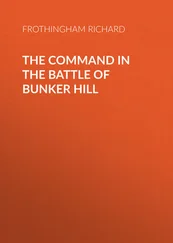There was room for improvement on both designs. The Hurricane had a number of drawbacks, but the most serious was the failure to supply a self-sealing fuel tank in the fuselage. The tank, positioned close to the pilot, was easily ignited and was the cause of serious burns for any pilots lucky enough to survive the experience. The pilot canopy was also difficult to dislodge before baling out, and was later modified. Dowding urged Hawker from early in 1940 to seal the fuselage tanks with ‘Linatex’, but not until the battle was the modification slowly carried out. During the battle both Spitfires and Hurricanes had their less-effective two-pitch propellers replaced with constant-speed propellers, which improved general handling qualities and gave them an extra 7,000 feet of ceiling. A more serious problem was the supply of effective armament. Although the eight-gun fighter was regarded as an advance on German models, the .303 armament could not penetrate the armour installed in German fighters and bombers. Mixed armament was supplied for the eight guns in the hope that a mixture of armour-piercing and incendiary bullets would hit something vulnerable. But in his despatch on the battle, Dowding concluded that with better armament higher casualties could have been inflicted on the enemy. 12
The supply of trained fighter pilots promised to be a much more damaging constraint on Fighter Command operations than the supply of aircraft. Yet this deficiency can be wildly exaggerated. The number of fighter pilots available for operations increased by one-third between June and August 1940. The personnel records show an almost constant supply of around 1,400 pilots during the crucial weeks of the battle, and over 1,500 in the second half of September. The shortfall of pilots was seldom above 10 per cent of the force. The German single-seater fighter force, on the other hand, had between 1,100 and 1,200 pilots, with around 800–900 available for operations, a deficiency of up to one-third. The German fighter force was able to cope with this shortage only because it enjoyed a lower rate of loss than Fighter Command. 13If Fighter Command were the ‘few’, German fighter pilots were fewer.
Little of this was appreciated at the time on the British side. Air Intelligence estimated that the German Air Force had around 16,000 pilots in the spring of 1940, with at least 7,300 in operational units. 14There was a flurry of activity to try to raise pilot output to match these numbers. The training system was overhauled in the summer of 1940 with the addition of three operational training units capable of supplying 115 pilots instead of 39 every two weeks. This did not satisfy Churchill, who badgered the Air Ministry all summer with unhelpful suggestions for getting men into the cockpit. When he discovered that 1,600 qualified pilots were assigned to staff duties and a further 2,000 to training, he demanded an urgent inquiry, despite Sinclair’s assurance that most of the men were over-age or under-trained. More was expected of the many foreign airmen who made their way to Britain during 1940. By June they included some 1,500 Poles, who were undergoing training near Blackpool. Churchill was determined ‘to make the most of the Poles’, and in early July the War Cabinet authorized the creation of two all-Polish squadrons for Fighter Command. 15By August there was also a Canadian and a Czech squadron, but the rest of the Command had its share of American, Irish, Commonwealth and European volunteers. Two of the four Group commanders were non-British: Park was a New Zealander and Brand, commander of 10 Group, was South African.
Where there were obvious deficiencies was in the supply of non-combat personnel needed to make the whole Command organization work efficiently. There were shortages of manpower of all kinds at the air stations: fitters (grades I and II), armourers, instrument mechanics, maintenance and construction workers. There were shortages of signals personnel, which was a real drawback for a force that relied on communication. It was discovered in the summer that because of losses in France there was a dangerous shortage of tanker lorries for refuelling aircraft. Churchill’s response to this news was simply to exhort the ground crews to work faster: ‘the turn-around of aircraft in units should be a drill comparable with the Navy’s gun drill at Olympia’. 16
Technical problems like these may seem trivial when set against the sombre prospect of invasion, but they were the necessary components of a complex system of ‘command and control’ which gave Fighter Command a real striking power and operational flexibility. The heart of the system lay at Command headquarters at Bentley Priory in Stanmore, on the outskirts of London. It was here, in the Filter Room, that information on incoming aircraft was relayed by landline from all the radar stations around the coast. The plots were laid out on a large map table, and once the aircraft track was clearly established, this information was relayed in turn to the Group Headquarters and the individual Sector Stations (airfields). Additional intelligence was supplied by the Observer Corps whose members plotted enemy aircraft visually once they had crossed the coast. This information went first to an Observer Corps Centre, and then straight to Sector Stations and Group Headquarters. Group commanders then had to decide which of their sectors to activate, while Sector Station commanders were responsible for deciding which of their squadrons should fly on a particular operation. Once airborne, aircraft were controlled by Radio-Telephony Direction-Finding (R/T-D/F). The whole process was supposed to take minutes only. Without speed and clear instructions the system was pointless. 17
The entire structure of communication was dependent on early warning and continuous observation. The heart of the system was the Radio Direction Finding (RDF) apparatus, better known by the acronym RADAR (Radio Detection and Ranging). The technology was first developed in 1935 when it was demonstrated that aircraft reflected back to ground short-wave radio pulses, which could be captured on a cathode ray tube. By 1939 there were 21 so-called Chain Home radar stations circling Britain’s coastline, theoretically capable of detecting the height and range of approaching aircraft up to 200 miles distant. Average range was only 80 miles, but adequate for the German air threat across the Channel. The radar stations could not detect aircraft flying below 1,000 feet, and a second system of Chain Home Low stations was established after the outbreak of war to detect low-flying aircraft and coastal shipping. These stations had a range of only 30 miles and could not predict height, though that mattered less at such low altitudes.
Radar could not yet work inland. It had to be supplemented by the Observer Corps, formally founded in 1929, and commanded in 1940 by Air Commodore A. D. Warrington-Morris. It was staffed by volunteers across the country who largely trained themselves in aircraft recognition and methods of height estimation. On the outbreak of war there were 30,000 observers and 1,000 observation posts, each armed with a grid map, a height estimator, telephone, coloured map markers and the means to make tea. Posts were manned continuously; the system worked well in fine weather, but was defeated by low cloud cover and rain. Height estimation was difficult and often inaccurate. Group headquarters found that numerous Observer Corps plots cluttered up the map tables with a surfeit of less reliable information. 18
Radar, too, was by no means infallible. Height readings could be thousands of feet out; the time-lag was at times too long between sighting enemy aircraft and scrambling fighters to meet them (it took a minimum of four minutes for the squadrons to receive radar warning, but only six minutes for enemy aircraft to cross the Channel); radar equipment was continuously upgraded, which left some stations inoperable for brief periods while new technology was installed. By the time of the battle, secret intelligence was being supplied from decrypts of German Air Force ‘Enigma’ traffic, but although this was useful in building up a clearer picture of the German order of battle, it was less useful in giving information quickly enough on the scale and destination of major raids. This was not the case with low-level radio interception, whose role has generally been neglected. The RAF wireless interception station at Cheadle took advantage of the slack radio discipline displayed by German aircrew to supply a regular diet of accurate reports on range, destination and origin of aircraft which was relayed directly to Command headquarters as well as Group and Sector commanders. The net effect of all these different sources of intelligence was to create a web of information that gave Fighter Command an essential counter to the element of surprise enjoyed by an enemy who could pick and choose when and where to attack. 19
Читать дальше
